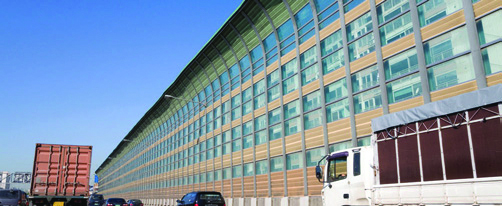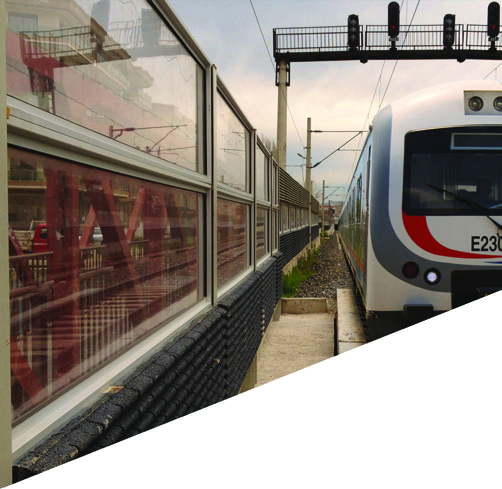Increased traffic and rapid development have contributed to a noise pollution problem, especially for commercial and residential areas near highways, railways and bridges. Noise barriers made of polymethylmethacrylate (PMMA, also known as acrylic) or polycarbonate sheet can reduce noise level and improve the quality of life for those living near these areas. Barriers made from polycarbonate or acrylic sheet offer maximum levels of glazing performance where transparency or tailored light transmission along with high impact strength is vital.

Sound barriers reduce the noise that enters a community from a highway by absorbing, reflecting or forcing the sound to take a longer path over and around the barrier. Sound is energy that decreases in intensity as it travels away from its point of origin. Sound waves travel out in all directions from vehicles on the roadways. When the sound waves encounter an obstacle or barrier, some of the sound will bounce off the barrier’s surface. This is called reflection. If the surface is porous, where there are small cavities or holes that extend into the interior of the barrier material, a portion of the sound waves will travel inside the cavities when they reach the surface. The waves will bounce around and eventually expend all their energy. This process is called absorption.
The transparent barriers made of acrylic or polycarbonate sheets are placed between support railings. These clear sheets are available in various thickness, length and colors. These barriers are solely for isolation and meet the strictest criteria of the European standards (EN Norms) regarding devices for the reduction of road traffic noise. Policam Sound block sheet that’s 15 mm thick and weighing in at around 18 kg/m2 reduces the noise level by a noticeable 30 dB (certified according to EN 14388).
www.siriusplastics.com.
